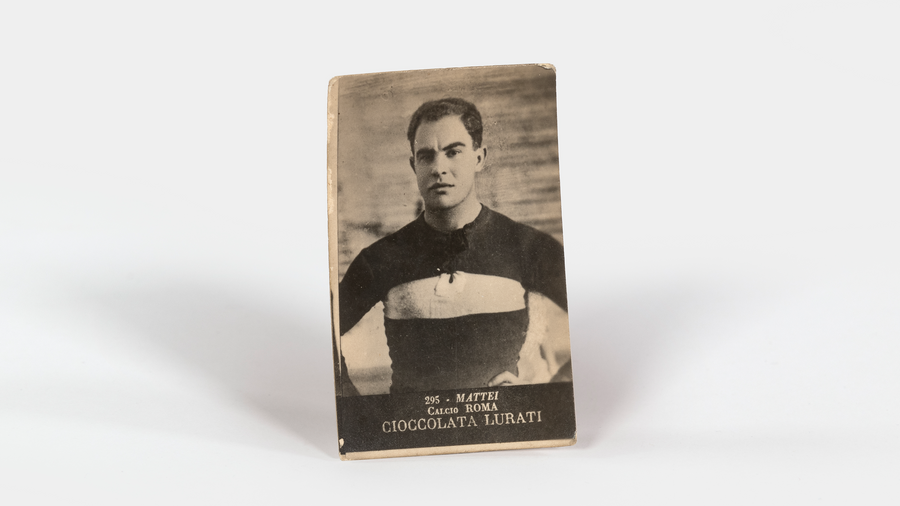
Alba was the dawn of Roma in more ways than one (alba literally means ‘dawn’ in Italian). Set up in 1907 as a multi-sports club, it was the best football team in the capital before the birth of AS Roma. During its early years, S.S Alba enjoyed success in cycling and athletics, with boxing following later. The first records of football activity date back to 7 November 1909, when a friendly match against Juventus Roma was played at Parco dei Daini.
Alba’s kit was green with a white band across the chest. From time to time badges would be made with the club crest depicting the Roman she-wolf.
Following an enforced break during the First World War, the club resumed activities in 1920 and soon after reached its zenith, largely thanks to the significant investments made by club owner Umberto Farneti to improve the team.
The turning point came in 1921 when Farneti, who also owned the Gambero wine bar in Via del Gambero (between Piazza San Silvestro and Via Frattina), managed to sign Giovanni Degni, Giovanni Corbyons and Mariano Alessandroni from Fortitudo, causing quite a sensation in the capital.
Following the addition of Hungarian duo Schrott and Egrel, Alba reached the Scudetto final of the old Prima Divisione two years running, succumbing to Bologna in 1925 and Juventus in 1926 (when they were deprived of another Hungarian star, Marton Bukovi).
These results helped boost Alba’s status but despite being the most popular team in the capital they did not have a decent pitch to play on, and had to alternate between pitches in Ferratella and Lungotevere Flaminio. Following a merger with Audace Club Sportivo in 1926, the team was able to use the Motovelodromo Appio facility.
The Alba pitches were maintained by Francesco Martucci and his wife Angelica, known affectionately as ‘Uncle Checco’ and ‘Sister Angelica’, who would later become the custodians of the legendary Campo Testaccio.
In March 1927 Farneti moved aside and Ulisse Igliori became president. Before long he was overseeing the merger with Fortitudo-Pro Roma and Roman Foot Ball Club, which led to the birth of AS Roma.
It was Igliori, as the newly formed club’s chief executive, who conducted negotiations to bring William Garbutt to the Giallorossi dugout.
Besides the Motovelodromo Appio, Alba-Audace provided AS Roma with a managerial figure in Vincenzo Biancone and a significant core of footballers, including the likes of Bruno Ballanti, Attilio Mattei, Arturo Chini Ludueña, Angelo Bianchi, Cesare Augusto Fasanelli, Fernando Giannelli, Tomasz Heger, Pierino Rovida, Leopoldo Caimmi, Giovanni Degni, Gino Iacoponi, Nazzareno Celestini, Luigi Ziroli, besides the coach Pietro Piselli, who was in charge of the team – together with former Fortitudo coach Jozsef King – for the first two friendlies against UTE and Attila.
Alba was refounded soon after and continued to exist through various name changes (Alba Motor, Alba again, Albaerotecnica and Albatrastevere) until 1968.
There have been further links with AS Roma over the years. Several players, like Ballanti and Corbyons, returned to wear the green and white shirt of Alba again. Fulvio Bernardini began his coaching career at Albatrastevere in 1947, later bringing Gianfranco Dell'Innocenti with him to Roma.
Other Giallorossi players who plied their trade for Alba include Omero Carmellini, Nicola Fusco, Claudio Matteini, Omero Urilli, Otello Trombetta, Elio Bianchi and Pietro Benedetti.
With the birth of Alba Roma 1907, the story continues…

 Tickets
Tickets
 Shop
Shop




































